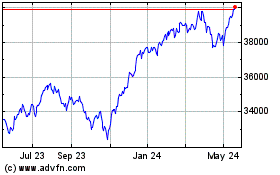
There’s a golden thread that weaves its way through all that’s
happened to us and will happen to us.
It boils down to one word: bubbles. Yet one economist and
analyst after the next are announcing that there is NO bubble… or
at least not yet. And they give their reasons (none of which make
any sense).
Even Janet Yellen, the Fed chairman, is of the opinion that
we’re not in any kind of bubble.
Here’s the thing…
That is exactly what happens when bubbles
form.
People from all backgrounds — the smart and dumb, the educated
and the educators — deny the existence of that bubble.
I can understand why they do it. Most of them benefit from the
free ride they’re enjoying as a result of the bubble, they don’t
want it to end.
What they fail to realize, in their delusional states, is that
bubbles don’t correct. They burst. And the aftermath is brutally
painful.
The fact that so many people are defending the Fed’s policies and arguing
why we’re not in a bubble is the best sign that it is in
fact a bubble.
By just stepping back and being objective, this fact is
obvious.
The trajectory of the market,
especially in the last year, has been classically bubble-like in
its pattern.
The Dow Jones has seen a larger point gain than in the
dramatic late-1994 to early-2000 bubble. It is up over 140% in a
little less than five years, and there has only been one bull
market since the early 1950s that has lasted longer than that
without at least a 20% bear market pull back.
The last bubble that burst saw the Dow rise 100% in five
years, then crash by 50%!
The Fed is creating one bubble after the next by its policy of
pushing down short-term and long-term interest rates, which leads
to massive speculation and returns chasing.
The consequence of unprecedented quantitative
easing and money printing has not been inflation in
consumer prices (as I’ve said for years it wouldn’t be), but
inflation in financial assets.
Here’s the thing, from decades of studying all the bubbles in
modern history, I’ve identified 10 rules that such phenomena
follow.
Knowing them helps you to identify bubbles when no one else can,
and it helps you know what the aftermath will most likely look like
when the manure hits the fan.
The 10 rules that bubbles follow are:
Rule #1: All growth, progress and
evolution is exponential, not linear.
Rule #2: All growth is cyclical, not
incremental.
Rule #3: Bubbles always burst; there are
no exceptions.
Rule #4: The greater the bubble, the
greater the burst.
Rule #5: Bubbles tend to go back to where
they started or a bit lower.
Rule #6: Financial bubbles tend to get
more extreme over time as credit availability expands along with
our incomes and wealth.
Rule #7: Bubbles become so attractive that
they eventually suck in even the skeptics, like a succubus
ensnaring unwary men.
Rule #8: No one wants the “high” and easy
gains of the bubble to end, so everyone goes into denial,
especially in the latter stages.
Rule #9: Major bubbles occur only
about once in a human lifetime, so it
is easy to forget the lessons from the last one. The last bubble of
this magnitude that burst was from 1922 to 1929: the Great
Depression.
Rule #10: Bubbles may seem fruitless and
destructive when they burst, but they actually serve a very
essential function in the process of innovation and human progress
(more on that another day.)
Learn why
the Dow will plunge to 6,000!

Harry Dent
Dow Jones
Index Chart
From Feb 2025 to Mar 2025

Dow Jones
Index Chart
From Mar 2024 to Mar 2025
